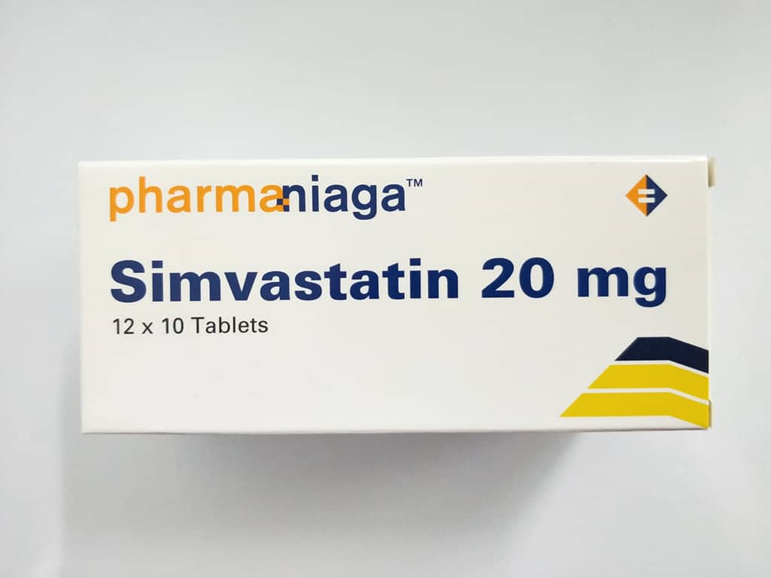A nurse is teaching a client who has a new prescription for simvastatin. Which of the following instructions should the nurse include?
You should take the medication in the morning.
You should avoid grapefruit juice.
You should monitor for ringing in the ears.
You should expect brown-colored urine.
The Correct Answer is B
Choice A reason: Taking the medication in the morning is not the correct instruction. Simvastatin is a statin drug that lowers cholesterol levels by inhibiting the enzyme that produces cholesterol in the liver. The liver produces more cholesterol at night, so simvastatin is more effective when taken in the evening or at bedtime.
Choice B reason: Avoiding grapefruit juice is the correct instruction. Grapefruit juice can increase the blood levels of simvastatin and cause serious side effects such as muscle damage, liver damage, and kidney failure. Grapefruit juice inhibits the enzyme that metabolizes simvastatin in the intestine, leading to higher concentrations of the drug in the bloodstream.

Choice C reason: Monitoring for ringing in the ears is not the correct instruction. Ringing in the ears, or tinnitus, is not a common or serious side effect of simvastatin. However, some other medications that lower cholesterol, such as niacin and gemfibrozil, can cause tinnitus. The client should report any unusual or persistent symptoms to the prescriber.
Choice D reason: Expecting brown-colored urine is not the correct instruction. Brown-colored urine, or hematuria, is not a normal or expected side effect of simvastatin. However, it may indicate a serious condition such as rhabdomyolysis, which is a rare but life-threatening complication of statin therapy. Rhabdomyolysis is the breakdown of muscle tissue that releases a protein called myoglobin into the bloodstream. Myoglobin can damage the kidneys and cause brown-colored urine. The client should seek immediate medical attention if they notice any signs of rhabdomyolysis, such as muscle pain, weakness, fever, or dark urine.
Nursing Test Bank
Naxlex Comprehensive Predictor Exams
Related Questions
Correct Answer is D
Explanation
Choice A reason: The extra letters after the name of the medication do not mean it is a stronger dose, but that it is a combination of two different medications. Metoprolol is a beta-blocker that lowers blood pressure and heart rate, while hydrochlorothiazide is a diuretic that reduces fluid retention and blood volume. The combination of these two medications may have a synergistic effect and lower blood pressure more effectively than either one alone.
Choice B reason: The client will have to do some things differently because it is not the same medication, but a combination of two medications. The client will have to monitor their blood pressure, weight, fluid intake, and electrolyte levels more closely, as the addition of hydrochlorothiazide may increase the risk of dehydration, hypotension, and hypokalemia. The client will also have to avoid alcohol, salt, and potassium supplements, as they may interact with the medication and affect its efficacy or safety.
Choice C reason: The client will still have to diet to lose weight, as the medication does not cause weight loss, but may cause weight gain due to fluid retention. The client will have to follow a healthy diet that is low in sodium, fat, and cholesterol, as these may worsen hypertension and increase the risk of cardiovascular complications. The client will also have to exercise regularly, as this may help lower blood pressure and improve overall health.
Choice D reason: The client may experience fewer side effects with the new medication, as the combination of metoprolol and hydrochlorothiazide may lower the dose and frequency of each medication, and reduce the adverse effects of each one. For example, metoprolol may cause fatigue, dizziness, or bradycardia, while hydrochlorothiazide may cause dry mouth, headache, or gout. The combination of these two medications may balance out these effects and improve the client's tolerance and compliance.
Correct Answer is C
Explanation
Choice A reason: Taking this medication with food is not necessary, as lisinopril can be taken with or without food. Food does not affect the absorption or effectiveness of lisinopril.
Choice B reason: Facial swelling is not an expected effect of this medication, but a serious adverse reaction that indicates angioedema. Angioedema is a life-threatening condition that causes swelling of the face, tongue, throat, and airway. It requires immediate medical attention and discontinuation of lisinopril.
Choice C reason: Reporting a cough to the provider is an important instruction, as a cough is a common and annoying side effect of lisinopril. Lisinopril belongs to the class of angiotensin-converting enzyme (ACE) inhibitors, which can cause a dry, persistent, nonproductive cough. The cough may interfere with the client's quality of life and adherence to the medication. The provider may prescribe an alternative medication, such as an angiotensin II receptor blocker (ARB), to avoid the cough.
Choice D reason: Increasing the intake of potassium-rich foods is not advisable, as lisinopril can cause hyperkalemia (high potassium levels) due to decreased potassium excretion in the urine. Clients should monitor their potassium levels and avoid excessive intake of potassium supplements or foods, such as bananas, oranges, potatoes, and tomatoes.
Whether you are a student looking to ace your exams or a practicing nurse seeking to enhance your expertise , our nursing education contents will empower you with the confidence and competence to make a difference in the lives of patients and become a respected leader in the healthcare field.
Visit Naxlex, invest in your future and unlock endless possibilities with our unparalleled nursing education contents today
Report Wrong Answer on the Current Question
Do you disagree with the answer? If yes, what is your expected answer? Explain.
Kindly be descriptive with the issue you are facing.
